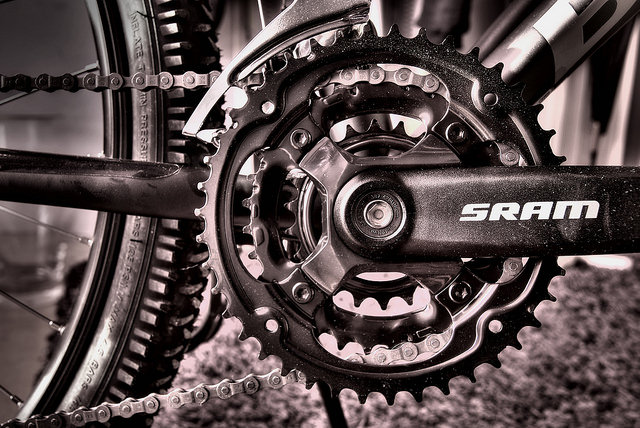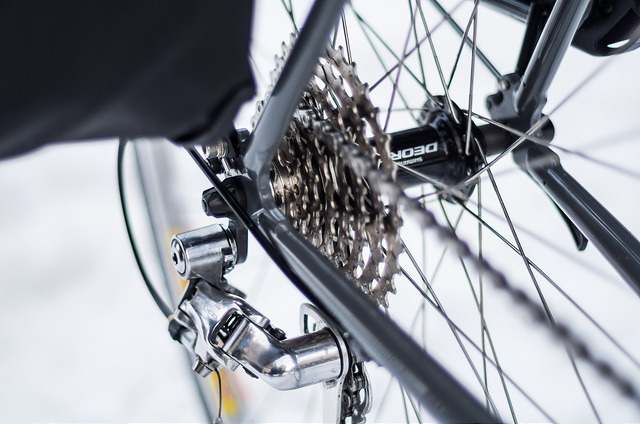Bike Gears 101
Mar 30th 2018

Photo Courtesy of Ricardo Cuppini via Flickr
Why are there different bike gears? Using the right gear will help you navigate different types of terrain and hills with ease and make for a seemingly effortless ride - so you can be out longer and conquer more distance.
Bicycles have four general types of gearing systems
Single Speed : The bicycle has a single gear ratio. On a single speed bike, there is one size chainring in the front; and a smaller size sprocket in the back, which has the ability to turn independently in reverse without the pedals. This is called "freewheel". Freewheel means the wheel can rotate without the pedals and you can back pedal.
Fixed Gears: The bicycle has a single gear ratio, also the pedals will rotate along with the wheels while it is in motion.
Hub Gears: The gears on the bike are enclosed in the rear hub.
Derailleur Gears: the most common type of gear. This type of gear will have different gear ratios based on the adjustment of the size of the chainring and/or rear sprocket. The derailleur pushes the chain off one sprocket/chainring on to another and "derails" the chain.

Photo courtesy of Andrew Seaman via Flickr
Crankset Variations:
Triple (3 chain rings): Large chain ring has 52 teeth, medium has 29 teeth and small has 30 teeth
Standard (2 chain rings): Large chain ring has 53 teeth, small has 39 teeth
Compact (2 chain ring): Large chain ring has 50 teeth, small has 34 - 36 teeth
Rear Cassette Variations
Your rear wheel cogs will generally have 9, 10, or 11 speed (the number meaning how many cogs are on your cassette).
Gear Ratio
Gear ratio for bikes is how many times the back wheel rotates for each full turn of the pedals.
What type of gear is best for me?
